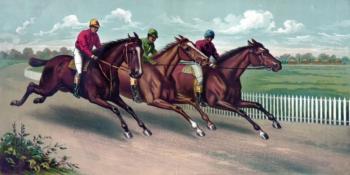The Greatest Centers in NBA History
Posted: May 22, 2015
Updated: October 6, 2017

A look at some of the greatest centers in NBA History.
Although every position on a basketball team is important to its success, the position of center tends to be the focus. A great center is often proven to be building block that used to lay the foundation of an NBA team. A center has the ability to go anywhere on the floor. The strength on the inside allows them to score in the paint at will. Their height allows them to block and grab rebounds giving their teammates other chances to score.
• For peak value, there wasn’t a more technically brilliant center than Bill Walton
• Ewing averaged to 21 points and 10 rebounds for most of his career.
• Mikan caused the introduction of the 24-second shot clock
An effective center owns the low post using their body to hold position while waiting for an lob pass only reachable by them so they put in the easy two. Often centers would have a special maneuver that gives them a character of their own. On the basis of their sheer size, the center is often the focus of attention from fans. Let us look at some of the greatest center to grace our presence in basketball history and U.S gambling news.
Bill Walton Blazed a trail while Ewing brought basketball back to New York
Bill Walton was a sight to behold back in the early to mid 1970’s with his fiery hair and beard burning holes in the opposition. At UCLA, the 6 foot 11 inch Walton won the national college athletic association championship for two seasons straight. That’s not nearly as impressive as the UCLA team going undefeated for two years straight. Logically Walton was the first overall draft pick for the NBA in 1974.

Entering as a Portland Trailblazer, Walton would help the team acquire one championship. A number of nagging injuries with his ankles and feet ultimately brought this star down from the sky. But don’t let the career average of 13 points and 10 rebounds per game fool you. For peak value, there never was a more technically brilliant center. After Portland, Walton was also able to pull off two more championships with the Boston Celtics in 1977 and 1986.
Patrick Ewing was an amazing center for Georgetown University and helped create a standard in the position for years after. Entering the NBA draft as a number one overall pick, Patrick was expected to do big things in New York. Ewing became a messianic figure for New York and redirected the hearts and minds of the populace towards the Knicks once again. With 20 points and 9 rebounds a game, Ewing won Rookie of the Year. Ewing increased his average to 21 points and 10 rebounds for the rest of his career.

He could use his body on the inside and get layups and jam it inside, while being able to step outside the paint and sink easy 2-pointers. With the ability to always make certain shots, Ewing’s consistency may have been his best quality. The Knicks Rivalry between the Bulls during the 90’s took some steam from Ewing and every punter that waged on him within U.S gambling laws. No matter how well he played, Ewing couldn’t seem to overcome Michael Jordan, only beating the Bulls during his one year of retirement.
George Mikan defined a position and Mr. Robinson ruled in his neighborhood
George Mikan helped define the position of center. The first NBA superstar center of his day, Mikan was a giant among ants in the 1950’s. At DePaul University, Mikan would simply stand under the rim and swat everything that came his way. Playing for the Minneapolis Lakers, Mikan would loiter near the rim and shoot hook shot after hook shot. It became a coaching formula to simply keep the ball away from Mikan on offense.

Mikan’s dominance was such a distraction that the NBA began make more goaltending charges. Mikan also was met with the introduction of the 24-second shot clock and a wider 3-second lane in order to limit the time with his hands on the ball. For three years Mikan led the league in scoring with an average of 27 points per game.

David Robinson was called “Admiral” from his times playing for Navy. It was said that upon graduating from the Academy, the Navy allowed him to enter the NBA because he was too tall be aboard ships. Robinson was a well rounded athlete who could walk on his hands from one end of the court to the other. Learning how to play before a major growth spurt, helped 7 foot Mr. Robinson establish dominance in his neighborhood.
He could shoot a mid-range or drive past players with the ease of a guard. Averaging 14 points per game throughout his 14-year career, Robinson was named MVP in 1995 when he averaged 30 points a game and made 1,000 rebounds. In 1998, Robinson was in San Antonio. Later, he’d play alongside power forward Tim Duncan. The two 7 footers, called the “Twin towers”, were able to get two NBA championships in 1999 and 2003. Wager using online sportsbooks in the U.S would have had a great time back then.












